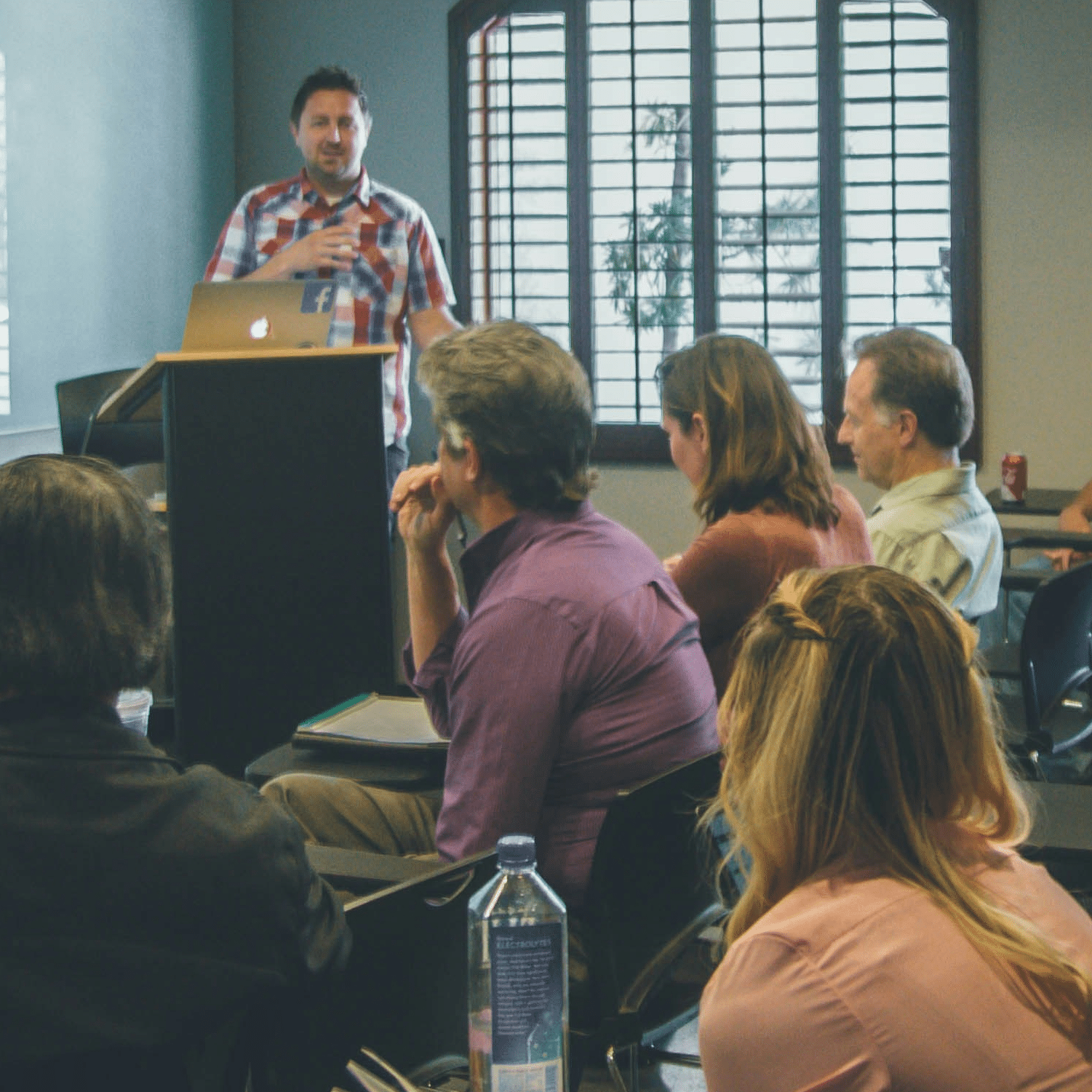Contents
The “say/do” gap
When was the last time you talked to a customer? For many, it’s difficult to recall.
Due to the recent acceleration in demand for digital experiences to replace traditional customer interactions and the isolating effects of the pandemic, it’s more common than ever to create, optimize, and market experiences without having a single conversation with a customer.
This has led to a very real fear among many business executives that their organizations aren’t living up to their customer-centric values and are falling out of touch with customers. The risks of this growing divide are many, including poor decision-making, increased rework, lost customer loyalty, and hits to the bottom line.
To mitigate these risks, some companies have implemented “customer connect” programs, in which employees talk with customers to better understand them and, ultimately, build empathy for them. The benefits of these conversations compound over time, helping to build institutional knowledge about customers and how to best serve them.
In this article, we will describe three customer connect programs and give you pointers on how to deploy one within your own organization.
Tesco Bank: Educating the design team
In the Customer Wednesdays program at Tesco Bank, the Customer Design team designates time every week to talk to customers about their spending habits, discuss their attitudes towards finances, observe their interactions with money, and bring these learnings back into the organization through storytelling. Catherine Richards, Head of Customer Design, has observed the lasting impact that these sessions have on her designers: “They remember the customer stories. They don’t remember the theory about why you should be customer-centric. They remember that Jill couldn’t afford to buy her daughter a winter coat because she needed to do the big shop that week. Those are the kinds of things that resonate with people, because that’s human connection.”
By hearing actual stories directly from existing and prospective customers, we’re able to tie narrative and emotional understanding about the people we’re building for to our work. Not only do these human stories stick with us longer than facts and figures, but research has shown that stories are significantly more effective in spurring action (source) and, ultimately, meaningful innovation.
Microsoft: Customer obsession in action
When Microsoft’s CEO Satya Nadella introduced ‘Customer Obsession’ as a core value for the company, the Customer Insights & Research (CI&R) team knew they had a key role to play in bringing it to life. There was a clear and practical need to help product owners gain more exposure to customers, but the CI&R team wasn’t big enough to own that for every product team.
In order to help Microsoft’s product teams gain first-hand exposure to customers, the CI&R team created the Customer Connection program. Through this program, product owners and engineers schedule live face-to-face conversations with customers who have opted-in to share their experiences, challenges, and desires for a given product. The product owners get lightweight training, supportive resources, and a CI&R coach to consult throughout the process.
There are a few things that have worked especially well about this program.
First, the program is intentionally designed to increase and improve direct interactions with customers, not turn product owners into professional researchers. This helps to lower perceived barriers.
Second, the training focuses on a hypothesis-driven framework that everyone uses to organize their questions, maintain focus during the session, and communicate actionable learnings. The power of the framework persists throughout the test-and-learn cycle; starting by surfacing existing assumptions, turning those assumptions into hypotheses , identifying the right questions to ask customers to either prove or disprove the hypotheses, and tracking progress against doing so.
And finally, the paired coaching relationship between product team members and the CI&R team ensures that the right questions are being asked in the right way.
Nancy Lincoln Perry, Principal User Research Manager of the CI&R team said, “The studies have produced solid results. We’ve seen our product teams capture significant insights regarding online safety for kids, voice typing in creative contexts, and preferences around human-AI interaction, to name just a few. Our impact measurement shows that 92 percent of our initial studies resulted in changes that will steer our products toward meeting customer needs.”
Lee Dicks Clark, Principal Program Manager Lead for Windows User Experience, said the Customer Connections program helped her with the Focus Assist feature for managing notifications and protecting focus time: “As we talked with customers, listening to their concerns, I felt the power of their stories in a way I hadn’t expected. One mother I spoke with was trying desperately to support her kids while making as much quality time with them as possible… As she spoke about her fight to manage her time, she started to cry. Now whenever I think about the value of those 23 minutes a person loses when they’re distracted, it’s not just a statistic. It’s about this human being, and others like her, whose time is priceless. Ultimately, these experiences taught me that we should all be interacting regularly with customers, whether our job title includes ‘researcher’ or not.”
Speaking with your audience
In early 2021, UserTesting partnered with a major global consumer products company whose personal health executives had noticed a growing disconnect between the marketing team and their customers, which was amplified during the pandemic. Especially in a category as intimate as personal health, how could their marketers effectively ‘speak’ to customers if they weren’t spending time getting to know them on a human level?
The market insights (MI) team was tapped to solve the problem. They decided to start a customer connect program with a select group of marketers in the UK.
The team hosted training sessions and coordinated the first customer connects to guide the pilot group to actionable learnings about the customers they were serving. They gave everyone discussion guides so they could ask the right questions, such as:
- Can you tell me more about your daily personal healthcare routine?
- What do you do to look and feel great?
- Which devices support you in your routine?
- Do you have any health needs that are not currently being catered to?
Adoption of the program was initially slow, with just a handful of early adopters jumping at the opportunity to speak with customers. It wasn’t until the MI team hosted a customer connect session at a leadership conference that the program started to gain traction. They teed up hundreds of mandatory customer connects for the marketing directors and VPs to conduct.
When the attendees of the leadership conference returned to their teams, there was a renewed sense of passion about better understanding customers. Participation in the program became a leadership expectation. Some marketers branched out in how they applied customer connects to their work, taking the opportunity to get direct feedback on early concepts and works in progress. While the MI team hadn’t initially planned for these use cases, they saw the value and quickly developed new discussion guides to support them.
To date, over 500 marketers in the UK have participated in customer connects, beating the team’s initial adoption goals. They have expanded the program to marketers outside the UK by training distributed ‘ambassadors’ to spot opportunities and provide guidance for customer connects within their own regions.
Throughout this two-year journey, a few key learnings have emerged:
- Create buy-in through guided exposure. A participant’s first customer connect session may be somewhat nerve-wracking, especially if they’re not used to talking with customers. Show them a low-friction path forward by providing hands-on guidance, including scheduling the session to preparing a discussion guide to reflecting on the conversation. Once they have gone through their first customer connect, they are likely to pick up the reins and take responsibility for future sessions.
- Start small and targeted. While enterprise leaders’ org-wide ambitions are necessary for big-picture change, traction is best built by starting with the eager few participants who inherently see the value of spending time with customers. Learning how these early adopters derive value from the program is critical input for its evolution.
- Maintain an exploratory mindset. Your participants will likely push the bounds of the program in unexpected ways; whether applying customer connects at different stages of their projects or seeking out perspectives of unaddressed audiences. Encourage their initiative with guidance and support. Not only will this spark personal commitment, it will also provide the necessary flexibility for teams to incorporate customer connects into their own work.
How to create a customer connect program
When you’re ready to set up a customer connect program within your own organization, here’s how you can get started.
Begin by building a program proposal. Detail what you plan to do, why it’s valuable and pertinent to the organization, and what you will need from your executive sponsor. The proposal should account for realistic time expectations of participants (1-4 hours per month) and describe how the learnings from customer connects will be used and socialized. Remember, you don’t need to write a dissertation; you just need to build a compelling argument and a high-level plan.
Then, secure an executive sponsor, someone who can be the driving force for involved teams Having an executive sponsor from the start will help in three important ways:
- They signal to the organization that spending time learning about customers is a priority. People need a strong push to step out of their habitual workflows, even if it’s just one customer connect per quarter. Have the sponsor discuss the program in org-wide meetings, include them in program activities, and invite them to review training materials.
- They will help you align the program to strategic initiatives. From casting the vision to defining the scope to establishing success metrics, your executive sponsor should help lay the groundwork for an impactful program.
- They will advocate for the program at the leadership level. By bringing learnings from the program to their peers, they can extend the impact and encourage other leaders to model customer-centric behavior. In the long run, this exposure will also open doors for the program to grow into other teams.
Next, you’ll need to determine how to facilitate the customer connects. A good human insight solution will streamline the process of: finding and setting up time with current and prospective customers, supporting remote video conversations, recording the sessions, and providing analysis of the conversations.
If your organization isn’t yet ready to invest in new tech, you may choose to piece together scheduling and video conferencing tools already in place at your company. Consider how to make it as easy as possible for people to get involved by paving a clear and guided path for their first customer connect.
Once you have identified the right solution, sketch a high-level timeline for rolling out the program. Depending on the size of your organization, this may be a multi-year plan to grow into all of the targeted teams. Take into account the time it will take to create processes, implement systems and resources, pilot the program with a small group, and methodically grow the program.
For example, a roll-out plan for a large enterprise might look like this:
Now that you have a roll-out plan, it’s time to activate your customer connect program! Start by training a pilot group.. There will certainly be specifics of your program that you’ll need to create training around, but you can also leverage external resources on interviewing customers and sharing insights. Here are some of our favorites:
- Conducting Effective Interviews on-demand course for UserTesting customers
- Continuous Discovery article from the Interaction Design Foundation
- How to Conduct Customer Interviews article and resources from Thomas Carney
- Follow These 16 Customer Interview Best Practices to Get the Answers You Need article from CoSchedule
Additionally, one of the most powerful ways to build momentum is to host share-out sessions following each round of customer connects. Bring the participants together in small groups to discuss the stories they heard, identify key learnings, and spot opportunities for further investigation. It’s natural that new questions will arise in these share-outs, so capture them in discussion guides and bring them to future customer connects.
Once the initial cohort goes through their first customer connects, you will likely want to establish a trusted partner on each team involved; these are individuals who naturally take the lead on discussing and sharing learnings. You can tap these individuals to get others involved and share the guidance and resources you’ve created. Continue to identify trusted advisors as the program grows.
As you get more teams involved, pay close attention to the types of questions that naturally arise and the ways in which insights are informing strategies and decisions. Supporting new ways of leveraging customer connects with discussion guides and storytelling templates will cement the value of the program.
Once you hit a critical mass, you should establish new norms for sharing interesting insights and important wins from the program. You may do this by hosting real-time watch parties or sharing customer clips and highlight reels where work is being done (e.g. Figma, Jira, Slack, etc.). Just remember to keep the customers’ stories and perspectives at the forefront.
Get started!
You likely have all the tools you need to start your customer connect program. Just remember to start with a small group, make it easy for people to join, and look for ways to make customer connects a shared experience for your organization. Given the opportunity, guidance, and a bit of encouragement, anyone can build customer empathy to inform everyday decisions.
Once you start seeing and hearing customer stories in everyday conversations, you can rest assured knowing that your organization has successfully closed the customer empathy gap.
So, what do you think? Share your questions and comments on customer connect programs with us below!
Photo by charlesdeluvio on Unsplash
The opinions expressed in this publication are those of the authors. They do not necessarily reflect the opinions or views of UserTesting or its affiliates.







